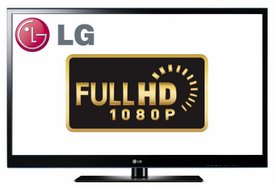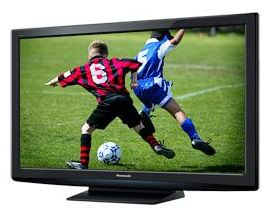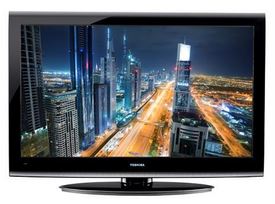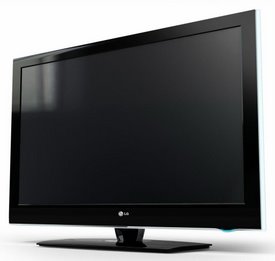Entries in 1080p (15)
Review: Samsung H6400 Smart TV
 Tuesday, December 16, 2014 at 7:58AM
Tuesday, December 16, 2014 at 7:58AM  The Samsung H6400 Series Smart TV impressed me right out of the box with accurate color and grayscale performance using its factory calibrated Movie picture preset. The H6400's well-contrasted imagery derived from its ample maximum light output (391 cd/m2) that's ideal for well-lit rooms and good black levels for optimized dark room viewing. Compared to the similarly styled H6350 series, the H6400 adds 3D, improved motion resolution, and the impressive RF-linked Smart Remote Control. If you don't need or want the H6400's extras, then the H6350 presents an even better value.
The Samsung H6400 Series Smart TV impressed me right out of the box with accurate color and grayscale performance using its factory calibrated Movie picture preset. The H6400's well-contrasted imagery derived from its ample maximum light output (391 cd/m2) that's ideal for well-lit rooms and good black levels for optimized dark room viewing. Compared to the similarly styled H6350 series, the H6400 adds 3D, improved motion resolution, and the impressive RF-linked Smart Remote Control. If you don't need or want the H6400's extras, then the H6350 presents an even better value.
Size and style
I reviewed the 55-inch version (UN55H6400) and other available screen sizes include 48-inches, 50-inches, 60-inches, and 65-inches. The H6400's thin bezel design (0.56 inches along the top and sides) accentuated its 1080p 120Hz LCD panel. A swivel base stand proved useful, and the TV's chassis is compatible with standard wall mount hardware.
Processing prowess
Samsung's superior video processing gives the H6400 effective film-mode detection for maximum detail and deinterlacing that's free of unsightly jagged edges. I also appreciated the TV's Auto Motion Plus feature that reduced motion blur with video sources like sports programming without altering the filmic look of 24fps material (most movies and TV shows). Most LCDs cannot reduce motion blur without also also smoothing the on-screen motion of movies to the point they appear soap opera-like.
App goodness
The TV's quad core processor made for fast start up times and speedy app performance. The selection of apps on Samsung Smart TVs continues to be the most comprehensive among manufacturers, and I was please to see a recent update for Amazon Instant Video add support for the remote's precise cursor control - a first among third party apps and something Netflix should have added long ago. The H6400 flawlessly streamed 1080p video from popular services over its WiFi link, and a bandwidth speed test using its built-in web browser revealed no problem saturating a 60Mbps/6Mbps (down/up) connection. In a pinch, Bluetooth mouse and keyboard support effectively transform the H6400 in to a convenient Internet workstation.
Not quirkless
Similar to Samsung's otherwise awesome 4K UHD HU8550 television (read review), the H6400 overscaned 720p broadcast channels like ABC and Fox when using its built-in over-the-air (OTA) tuner - 720p input via the TV's four HDMI ports could be configured to not cut off the edges of the video picture. Also, navigating the H6400's channel guide was annoyingly sluggish.
The H6400's excellent color accuracy (note the CalMAN Color Checker result below) was tempered by benchmark tests that revealed a slight loss of fine color detail with component video (YCbCr) encoded sources (most HDMI video devices). RGB encoded HDMI input didn't exhibit this loss.

Audio quality from the H6400's down-firing stereo speakers was surprisingly weak sounding. Enabling the TV's DTS TruSurround sound mode did improve the listening experience, but I recommend adding a good soundbar/soundstand for a more immersive home theater experience!
Bottom line
Everyone appreciates a great deal on good technology, and the Samsung H6400 Series Smart TV is an above average HDTV with picture performance comparable to TVs that cost much more. In my time with the H6400, Samsung has pushed a couple of firmware update, and I'll update this article if any future updates address the few quirks noted above.
Read my complete review of the Samsung H6400 Series Smart TV at HD Guru.
Review: DVDO Air3C-Pro
 Tuesday, October 21, 2014 at 9:51PM
Tuesday, October 21, 2014 at 9:51PM 
In the box
The Air3C includes everything needed for most installation scenarios. The similarly sized transmitter and receiver are slightly larger than a deck of playing cards and weigh 107g (3.75oz) each. Also in the box are USB power adapters, USB cables, and a pair of HDMI cables (4 feet long each).
Simple setup
Air3C setup is as simple as connecting the HDMI cables and adding USB power to the transmitter and receiver. After the units automatically make the initial connection (aka "mate"), they are able to reconnect within a few seconds after powering up.
 Mounting options
Mounting options
The Air3C units have two holes for affixing them onto a flat surface with screws or similar fasteners. An included clip-on bracket and adhesive Velcro pads can be used to attach the receiver to the back of a TV. Ideally, the units will be positioned within line-of-sight, but the Air's 60GHz radios can bounce signals off of a wall or ceiling to maintain a connection with slightly obscured transmitter and receiver placement.
Robert's Favorite Home Theater Gear
Main features
In addition to the Air3C-Pro, DVDO offers a more budget-friendly non-pro version. Both models feature identical wireless technology and basic performance features that include:
-
Up to 1080p60 HDMI video transmission
-
3D video
-
Up to 7.1 channels of HD audio
-
USB powered
-
Very low latency
-
CEC passthrough
What makes the Pro version unique is a software configuration tool that can confirm connection status, evaluate signal performance, and create custom device parings including whitelisting for restricting connections between specified units.
The software also features firmware update capabilities for both versions should the need arise.
Efficiency improvement
The biggest improvement of the Air3C compared to the original DVDO Air is that it can be freed from a wall outlet! The unit still requires a separate power source, but improvements in efficiency enable it to siphon juice from any nearby USB port that is rated for at least 5V/1A output.
In the lab, the Air's receiver was powered perfectly by the four USB-equipped TVs I tested it with. Adequate USB power was also obtained when connecting the Air's transmitter to a late-model Yamaha AV receiver and PlayStation 3 game console. However, when I tested the transmitter with power from a USB port on a Samsung Blu-ray player, a link was established with the receiver but it was unable to maintain the connection during video playback. A check of the player's USB port specification indicated that it maxed out at 5V/500mA - about half the required amperage. Switching the transmitter to a wall adapter quickly restored video output from the Blu-ray player.
Signal tests
The Air's 60GHz radio system was able to pass a usable 1080p signal through a wood framed wall at a total distance of about 11 feet, but the connection wasn't 100% reliable. The included documentation clearly discourages through-wall use, and it recommends keeping the transmitter and receiver within 10 meters of each other for best performance. With uninterrupted line-of-sight, I was able to nearly double that distance.
I found it best to mount the units high enough to minimize interference from people walking between the transmitter and receiver, but the Air's signaling proved robust enough to handle almost anything short of a completely covered unit.
Ultra low lag
Console gamers will be pleased to note that the Air3C added a miniscule 4ms of lag to a 1080p60 video stream as measured by the Leo Bodnar LagTester - a fraction of a frame of added delay with a 60Hz video source! Given the adequate USB power output of the PlayStation and its Bluetooth wireless controllers, the Air could regulate it to a nearby closet while retaining full functionality.
AV quality
For all intents and purposes, the Air's wireless video quality is identical to that of a wired HDMI connection with a maximum claimed throughput of 4Gbps. 1080p 24Hz and 60Hz signal tests from a DVDO AVLab TPG (read my review) and Blu-ray reference materials were delivered unaltered. RGB and YCbCr444 color spaces were supported although color depth beyond the common standard of 8 bits-per-pixel appeared unsupported.
Audio transport was similarly clean when listening to the Blu-ray album Sea Change from Beck that features a 24 bit/192kHz 6-channel PCM audio track with a sustained bitrate of 27.6Mbps. Obviously, the Air had no trouble handling the less data-intensive lossless soundtracks of Blu-ray movies.
Even better
I had nothing but praise for the original DVDO Air, and the Air3C-Pro adds impressive energy efficiency that enables it to be powered with a common USB port without degrading performance. The more affordable non-pro version of the Air costs about $100 less, but the pro version's software proved useful for determining optimal placement of the transmitter and receiver. No, nothing beats the reliability of a copper cable, but the DVDO Air3C-Pro is my recommended way of doing a 1080p HDMI link wirelessly.
Review: LG 55EC9300 OLED TV
 Tuesday, September 16, 2014 at 2:06PM
Tuesday, September 16, 2014 at 2:06PM  Updated March 27, 2015: added additional testing information
Updated March 27, 2015: added additional testing information
Plasma televisions that I would still recommend are all but extinct, however, my desire for a worthy successor is being fulfilled by OLED technology. OLED televisions deliver pure video black (as in 'the absence of light'!) while simultaneously rendering bright details at LCD luminance levels. OLED TVs also surpass the viewing angle performance of LCD and plasma televisions by maintaining incredible picture contrast and color saturation from every seat in the room.
Sublime imagery
The LG 55EC9300 1080p Smart 3D Curved OLED TV produced imagery that wowed me visually - more so than any of the hundreds of televisions I've previously tested. The 55EC9300 also represents the best value for this new display technology with a price that is a fraction of what it was only months ago.
Plasma black - LCD bright
The LG 55EC9300 features a glossy screen that may appear to be problematic for brightly lit rooms, but its bright imagery and effective anti-reflective surface made it ideal for even the most sun-drenched environments. And, the 55EC9300's LCD-like energy efficiency minimized heat output while keeping operating costs low.
Gaming and burn-in
Gamers looking for a TV with low video lag will find the EC9300 a good choice. Enabling the TV's game mode video option reduced lag from 107ms to 49ms (about 3 frames of delay with 60Hz input). Interestingly, selecting the "PC" input label further reduced video lag to 34ms (about 2 frames of delay).
Given the price of OLED technology, the robustness of the display is a valid concern. Uneven pixel wear, or burn-in, can occur with LCDs, OLEDs, and (of course) plasma TVs. I place LG's OLED displays closer to LCDs than plasmas when it comes to burn-in resistance. The EC9300's white sub-pixel in addition to red, green, and blue (RGB) has an added benefit of reducing wear on the OLED materials when generating white/bright video.
Robert's Favorite Home Theater Gear!
Color king
One of the first things I look at with any new TV is the quality of its factory calibration. In the case of the EC9300, I found its Cinema picture preset delivered an exceptionally accurate color response that averaged the lowest error I have recorded to date! This particular test examined a couple dozen hues including simulated skin tones, foliage, and grayscale levels. Owners will find LG's color setup for the EC9300 superb right out of the box.
Contrast is king
OLED televisions are still new technology and there is always room for improvement, but I couldn't be more pleased to see this once 'future' display technology available today. And as I recently predicted, I believe 1080p OLED TVs will be at mainstream prices within a year while 2160p OLED TVs will quickly take over as the new premium home theater display - (picture) contrast is king!
Read the full review of the LG 55EC9300 OLED TV at HD Guru!
Beyond 1080p
 Friday, March 18, 2011 at 1:01PM
Friday, March 18, 2011 at 1:01PM  I recently wrote a short column for Popular Science where I speculated about when we can expect to see HDTVs and content that deliver more than the 2,073,600 pixels of the 1080p format.
I recently wrote a short column for Popular Science where I speculated about when we can expect to see HDTVs and content that deliver more than the 2,073,600 pixels of the 1080p format.
For future consumer display designs, the need to go 'beyond 1080p' is being driven primarily by passive-glasses 3D technology that enables the use of inexpensive glasses that are similar to the ones used in commercial 3D cinemas. LG Electronics and other HDTV manufacturers that use LG's LCD panels have begun shipping their 2011 models that feature passive-glasses 3D viewing, and the primary trade-off of this 3D technology compared to competitors' 3D systems that utilize active shutter glasses is that passive 3D HDTVs sacrifices half of the picture resolution of 3D Blu-ray video. For broadcast 3D formats, the resulting video detail with current passive 3D technology is, at best, 1/4 the picture resolution of the 1080p format - that's approaching the pixel detail of a standard definition viewing experience.
3D displays that utilize passive glasses need more pixels to regain this lost detail, and that's why I expect to see consumer displays with double 1080p resolution coming to market as early as 2012 and going to 4x 1080p resolution soon thereafter.
Video content that goes beyond 1080p resolution is here now in the form of some streaming YouTube clips, PC content, and commercial digital cinemas where the video is delivered in form of a box of encrypted hard drives. The HDMI 1.4 specification added support for 4K resolution (4,096 by 2,160 pixels), but don't expect 4K Blu-ray movies anytime soon. Among Blu-ray's more interesting limitations is that its maximum resolution tops out at 1080p, and it does not support expanded color gamuts (x.v.Color aka xvYCC) that some HDTVs support, nor does Blu-ray video support greater than 8-bit channels for RGB color information (DeepColor supports up to 16-bit channels). However, an increasingly popular video format known as AVCHD that is utilized in many consumer HD camcorders supports x.v.Color capture although we're still waiting for a camcorder that supports DeepColor.
Increasing the resolution of a display beyond 1080p can improve the viewing experience with today's regular 2D HD content as well. If screen resolution remains static, increasing screen sizes will result in larger, more noticeable, pixel structures. Owners of Apple's iPhone 4 can attest to the visual benefits of increasing pixel density, and for large format displays including front projection setups, more pixels filling the screen produces a more seamless image that can be appreciated at closer distances. Of course, the benefits of increased screen resolution aren't fully realized until we can provide it with content that was captured, edited, and delivered to the display at full quality - ideally in a 1:1 ratio of screen pixels and video information.
 1080p,
1080p,  4K UHD,
4K UHD,  Display Tech
Display Tech $800 Big Screen HDTV Recommendations
 Saturday, November 27, 2010 at 9:06AM
Saturday, November 27, 2010 at 9:06AM  Right now is prime time for HDTV shopping, and I'm receiving a steady stream of requests for product recommendations. A recently received query inquired about what big screen HDTV options there were for around USD$800. This person wanted a screen size of about 50-inches and they were partial to the sublime picture quality of plasma displays, or perhaps a decent LCD if one stood out.
Right now is prime time for HDTV shopping, and I'm receiving a steady stream of requests for product recommendations. A recently received query inquired about what big screen HDTV options there were for around USD$800. This person wanted a screen size of about 50-inches and they were partial to the sublime picture quality of plasma displays, or perhaps a decent LCD if one stood out.
Here are three of my 'must have' prerequisites for big screen HDTVs (at any price):
- 1080p screen resolution (1,920 by 1,080 pixels)
- Ample HDMI inputs (at least 3)
- Can display 24p video (Blu-ray) at a 24x refresh rate
That last item is for cinema purists who prefer a display that can evenly repeat the frames within a 24fps video stream (Blu-ray movies/players) for display at higher refresh rates such as 48Hz, 72Hz, 96Hz, 120Hz, or 240Hz - all even multiples of 24. This type of video processing (frame repeating) maintains the film-like look of the original presentation unlike frame interpolation methods that can can introduce judder or oddly/overly smoothed on-screen motion.
Considering our $800 budget and desire for some big screen goodness, available candidates will most likely lack today's premium TV features such as support for 3D content and Internet-based multimedia streaming services (e.g., Netflix, Pandora, Vudu) - the latter could be added to any TV via a capable Blu-ray player or other set top box.
Generally speaking, plasma televisions provide more screen area per dollar spent than LCDs, but plasma TVs can be energy hogs especially if the brightest picture mode preset (often labeled 'vivid') is selected. Also keep in mind that most plasma TVs are designed for use at altitudes of less than 10,000 feet (3,048 meters) - plasma TVs tend to emit more electromechanical noise (often perceived as high pitched squealing) as elevation increases.
Plasma
Here are two solid $800-ish plasma TVs:
- 50 inch screen size
- 3 HDMI ports [1 side]
- 2 component video inputs
- Analog PC input (VGA)
- USB [music, pictures]
- 24x refresh rate: yes (72Hz)
- Swivel stand
- Panel depth: 2.2 inches
- Warranty: 2 years panel; 1year parts/labor
- 49.9 inch screen size
- 3 HDMI ports [1 side]
- 2 component video inputs
- SD card reader [pictures]
- 24x refresh rate: no
- Panel depth: 3.7 inches
- Warranty: 1 year parts/labor
Comparing the specs of the aforementioned plasma televisions, LG's PK550 provides these advantages over Panasonic's S2:
- Improved warranty
- Analog PC input (VGA)
- Swivel stand
- Slim cabinet depth
- Can display 24p video at a 24x refresh rate
The Panasonic (like most modern HDTVs, 1080p or not) accepts a 1080p24 video signal without complaint, but the signal is immediately converted to 60Hz (the TV's refresh rate) - see related: Telecine judder. The LG also provides a superior selection of picture calibration controls.
Liquid Crystal Display
Looking at LCD televisions, our budget and prerequisites put us in the 46/47 inch screen size category. A slightly smaller screen, but significantly brighter and with excellent energy efficiency. LCD's main weakness is that its picture contrast, color saturation, and hue degrade when the screen is viewed outside of its sweet spot (front and center). The picture quality of plasma televisions is negligibly affected as viewing angle increases.
- 46 inch screen
- 4 HDMI [1 side] w/InstaPort
- 1 component video input
- Analog PC input (VGA)
- USB [music, photos]
- Ethernet port for DLNA streaming [photo, music, MPEG2 video]
- Panel depth: 3.52 inches
- Warranty: 1 year parts/labor
- 47 inch screen
- 3 HDMI [1 side]
- 1 component video input
- Analog PC input (VGA)
- USB [music, photos]
- Picture Wizard [calibration tool]
- Headphone output
- Panel depth: 4.00 inches
- Swivel stand
- Warranty: 1 year parts/labor
Both LCDs feature 120Hz display technology that can present 24p video using a 5x frame repeat for a more cinema-like viewing experience. The Toshiba G300U's network multimedia streaming abilities certainly add to its appeal as does its extra InstaPort-enabled HDMI port.
 1080p,
1080p,  Great Deals
Great Deals 















